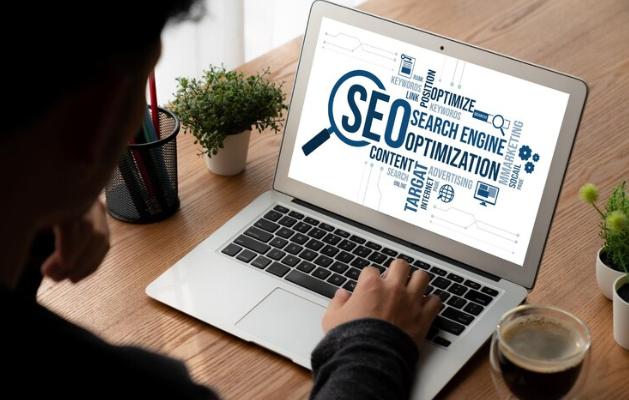
✅ What is Product Page Optimization?
The thorough and planned process of assessing and enhancing the design, content, and functioning of a webpage meant for product sale is known as product page optimization. This all-encompassing strategy calls for improving several components, including call-to-action buttons, photos, pricing information, consumer comments, and product descriptions. The aim is to design a customized, interesting purchasing environment highlighting the good. This fosters brand confidence and boosts sales in online markets.
Companies can now pinpoint areas needing work and carry out adjustments appealing to their target market. Product descriptions should be updated to emphasize important characteristics and benefits; photos should be optimized for improved visual appeal; the checkout procedure should be simplified to provide a seamless client journey. Including strong language and striking images will assist grab the interest of possible consumers. Clear, conspicuous call-to-action buttons inspire them to buy.
Maximizing a product page is about providing a flawless and fun purchasing experience. For internet merchants, this maximizes conversions and increases income.
✅ Key Pointers of SEO for Shopify Product Pages:
- Craft compelling product descriptions that transcend mere features.
- Detail benefits succinctly, highlighting unique selling propositions.
- Seamlessly integrate relevant keywords for enhanced search engine discoverability.
- Address customer pain points directly, showcasing how your product solves challenges or fulfills desires.
- Articulate a clear value proposition to capture attention and inspire confidence.
- View meticulously crafted descriptions as virtual salespeople, persuading potential buyers and driving conversions.
➞ High-Quality Product Images:
Transport your customers into an immersive visual odyssey with a stunning array of curated, high-resolution images that showcase your product from every conceivable angle. Elevate their browsing experience by optimizing image file sizes for swift loading and blending speed with crystal-clear clarity. Boost user interaction by incorporating Zoom features and providing alternate perspectives. This grants shoppers the ability to scrutinize and check your offerings. This multifaceted approach not only captivates attention but also empowers informed decision-making. This fosters a deeper connection between consumers and your brand. With every click, you invite them to explore, engage, and invest in the unparalleled quality and authenticity of your product.
➞ Competitive Pricing and Offers:
Refine your pricing strategy with meticulous attention to detail, underpinned by comprehensive market research to discern optimal competitive pricing benchmarks. Engage visitors from the outset by featuring enticing discounts, compelling promotions, and exclusive offers. This ignites their interest and prompts swift engagement.
Create an atmosphere of urgency through strategic employment of scarcity tactics such as limited-time offers or low stock alerts. This instills a palpable sense of immediacy that propels conversions and cultivates a dynamic shopping ambiance.
By leveraging insights garnered from market analysis, you can calibrate your pricing to resonate with your target audience. This balances value perception with profitability. Communicating the benefits of your offerings alongside irresistible incentives ensures that visitors are not only captivated but also incentivized to act swiftly. This enhances both the customer experience and your bottom line. This strategic interplay of pricing psychology and market dynamics positions your brand as both responsive to consumer needs and adept at maximizing revenue opportunities in a competitive landscape.
➞ Authentic Customer Reviews:
Nurture a robust community built on trust by actively soliciting and embracing authentic reviews and testimonials from delighted customers. Bolster transparency by prominently showcasing these testimonials. This serves as a potent social validation of your product’s caliber and dependability. Showcase your unwavering commitment to customer contentment by swiftly and attentively addressing commendations and critiques. Reinforce your brand’s integrity and nurture enduring relationships.
These genuine interactions confirm the value of your offerings, cultivating a sense of camaraderie and trust among your customer base. Showing a readiness to listen, adjust, and grow depending on comments helps you to show your commitment to offering first-class experiences. This proactive strategy not only enhances the reputation of your business but also helps to build a devoted community of champions who fervently endorse your goods and services to others.
➞ Intuitive Navigation and Seamless User Experience:
Seamless user experience starts with intuitively crafted product pages that serve as the gateway to your offerings. Prioritize accessibility by ensuring that essential elements such as product categories and filters are easily discoverable. This frees users valuable time and simplifies navigation. Whether they are just browsing or hunting for a particular item, make sure they will locate what they are looking for.
Adopting mobile responsiveness is not optional in the digital terrain of today. One must offer a consistent and satisfying experience over all screen sizes. Optimizing your website for mobile users not only increases your audience but also demonstrates your dedication to inclusion and user pleasure.
➞ Persuasive Call-to-Action Buttons:
The journey from browsing to purchasing hinges on persuasive call-to-action buttons. These small yet mighty elements wield immense power in nudging visitors toward decisive action. Crafted with precision and infused with compelling language, CTAs serve as catalysts for engagement. This urges users to take the next step in their journey.
Experimentation is key when it comes to optimizing CTAs. Test different placements, sizes, and colors to determine what resonates most effectively with your audience. Strive for visibility without overshadowing the user interface.
A well-designed CTA should be visually striking and effortlessly included in the browsing experience.
Motivating consumers to act depends much on the wording used in CTAs. Rather than using cliched sentences like “Buy Now” or “Add to Cart,” explore more appealing substitutes that arouse urgency or uniqueness. For instance, “Unlock Exclusive Access” or “Secure Your Spot Today” might inspire users to act quickly and create more value.
Persuasive CTAs are meant to help consumers confidently and easily negotiate the buying process. You enable consumers to go from discovery to conversion with ease by carefully arranging these buttons at pivotal points along the customer path. Whether it’s urging them to join up for a newsletter, add things to their basket, or make a purchase, every CTA points consumers in the direction they want.
➞ Streamlined Checkout Process:
A frictionless checkout experience is the cornerstone of successful e-commerce. It directly impacts conversion rates and customer satisfaction. Simplify the path to purchase by eliminating unnecessary steps and reducing cart abandonment rates. Provide options for guest checkout to cater to those who prefer a quicker transaction—Incentivize account creation by highlighting the benefits such as order tracking and personalized recommendations. Transparency is key to building trust. So, communicate shipping costs, delivery times, and return policies upfront. This ensures that customers feel confident and reassured throughout the transaction process.
➞ Cross-Selling and Upselling Opportunities:
Unlocking additional value during the checkout process can significantly impact your bottom line. Strategically identify complementary products or accessories that enhance the original purchase. Seamlessly integrate them into the checkout journey. Personalization is paramount here. Leverage customer browsing history and preferences to tailor recommendations. This makes them more relevant and enticing. By showcasing related products or offering enticing bundles, you not only encourage further exploration but also increase the average order value, maximizing the potential of each transaction.
➞ Ongoing Testing and Optimization:
Continuous improvement is essential for staying ahead of the curve. Establish a culture of ongoing testing and optimization, where key performance metrics are meticulously monitored to identify areas for refinement. Implement A/B testing to experiment with different combinations of elements. This refines product pages for maximum impact.
In this process, data-driven insights are priceless. From navigation to checkout, they let you repeatedly improve every element of the purchasing experience. Constant fine-tuning your strategy depending on real-time data helps you maximize return on investment. This guarantees that your e-commerce system stays leading edge innovative.
➞ Shopify Product SEO Best Practices:
Learning about E-commerce Making sure your e-commerce website shines among the competitors depends on good product search engine performance. Here’s how you may improve the search engine optimization approach of your Shopify Store to enhance visibility and generate natural traffic:
➞ Thorough Keyword Research:
Start by looking at thorough keyword research to find pertinent search terms appealing to your target market. See long-tail keywords and particular phrases that fit user intent by looking past broad language. Strategically weave these keywords into your product page content, titles, and meta descriptions. This optimizes search engine algorithms while maintaining readability and relevance.
➞ Optimized URL Structures and Header Tags:
Craft clean and concise URL structures that incorporate relevant keywords and accurately reflect the content of each page. Utilize header tags (H1, H2, H3, etc.) to organize and prioritize content. This signals its importance to search engines. By optimizing these elements, you enhance crawlability and indexation, making it easier for search engines to understand and rank your pages.
➞ Internal Linking and Navigation:
Establish a robust internal linking strategy to build logical connections between related pages within your website. By strategically linking between pages, you not only improve user navigation and engagement but also distribute link equity across your site. This bolsters its overall authority and visibility in search results.
➞ Using a Structured Data Mark-up:
Take advantage of structured data markup—like schema.org markup. This gives search engines more background on your products. Tag important components such as product names, descriptions, pricing, and reviews to improve the rich snippet and other SERP feature visibility of your listings. This can raise click-through rates and direct qualified visitors to your website.
➞ Performance Tracking and Evaluation:
Keep alert by tracking and evaluating Google Analytics and Google Search Console performance of your website. Track keyword ranks, natural traffic, conversion rates, and other pertinent statistics to learn a great deal about user behavior and search trends. Equipped with this information, you can make wise judgments and apply focused adjustments to enhance your SEO plan and propel ongoing steady improvement.
These SEO best practices help you set your e-commerce site for success in the cutthroat digital scene. This draws more qualified traffic and, finally, generates income and conversions. Maintaining your competitive advantage and staying ahead of the curve requires constant iteration and improvement of your approach depending on data-driven insights.
✅ Conclusion:
Mastering product page optimization is essential for maximizing the potential of your Shopify store and driving sustainable e-commerce success.
By focusing on elements such as compelling product descriptions, high-quality images, competitive pricing, authentic customer reviews, intuitive navigation, persuasive call-to-action buttons, streamlined checkout processes, cross-selling and upselling opportunities, ongoing testing and optimization, and SEO best practices, you can create an optimized shopping experience that delights customers and drives conversions.
Remember, product page optimization is not a one-time task but an ongoing journey of refinement and adaptation to evolving market trends and customer preferences. Stay proactive, stay agile, and watch your Shopify store thrive in the competitive e-commerce landscape.








